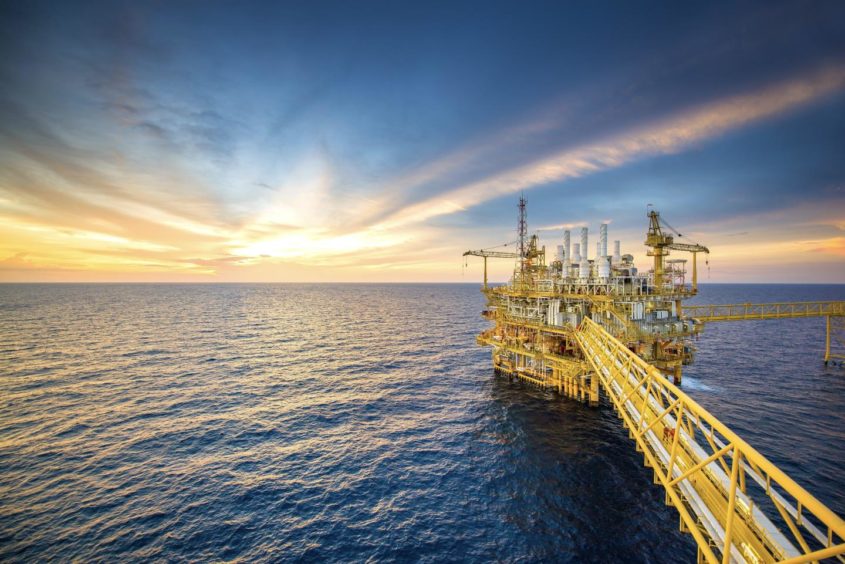 © Supplied by Shutterstock
© Supplied by Shutterstock Thailand’s dependence on imported liquefied natural gas (LNG) continues to expand despite soaring global prices. Significantly, the increasing demand for LNG is being exacerbated by production declines across ageing domestic fields, particularly Erawan.
Data from the Energy Policy and Planning Office (EPPO) show LNG imports during the first two months of 2022 totalled 1,912 million cubic feet per day (mmcfd), up 26% from the same period a year ago, with February’s imports surging by 56% on an annual basis, despite spot prices in the two months being 2.6 times higher than a year ago, reported Fitch Solutions.
“And while spot prices have rallied further in March and April, Thailand’s stronger appetite for LNG looks poised to be sustained for longer, as domestic production declines and domestic power generation continues to lean heavily on the fuel. In addition, growing threats to pipeline gas flows from Myanmar, coupled with accelerated lifting of domestic Covid-19 restrictions will further drive the need for LNG imports,” analysts at Fitch Solutions warned in their latest report.
The expanding demand for LNG is being exacerbated by production declines across ageing domestic fields. Field by field production data from the EPPO confirm long-term output downtrends across most of Thailand’s larger gas fields. The most prominent being ongoing declines at the Erawan field in the Gulf of Thailand.
“Erawan is Thailand’s largest gas field and accounts for about a third of its domestic gas production despite output having peaked in 2014. Thailand’s state-owned oil and gas firm PTTEP is due to operate the field after April 2022, after securing production and developments rights for the field in an auction held in 2018. However, the process leading up to its scheduled takeover has been far from smooth, particularly in the recent few years due to a legal dispute between outgoing operator Chevron and the Thailand Ministry of Mineral Fuels (DMF) over decommissioning fees,” noted Fitch.
Due to the dispute between Chevron and Thailand’s government, PTT Exploration & Production (PTTEP) (BKK:PTTEP) was unable to start early drilling works needed to stem falling output at Erawan.
“Erawan’s production averaged 867mmcfd in 2021, 27% lower than average production in 2020, although according to industry sources, current production is believed to be far lower at about 500mmcfd. Even if additional investments are made from PTTEP, once it completes the field’s takeover next month, the field’s output is unlikely to see a significant rebound given its mature nature. This is a major concern for Thailand, as its offshore assets mature and efforts to open new exploration acreages in the offshore continue to find limited success,” said Fitch.
Significantly, the sharp surge in global oil and gas prices is highly problematic for Thailand, warned Fitch. For LNG, spot prices in Asia have averaged $30.9/mmBTU year-to-date, up from $8.6/mmBTU in the same period in 2021.
“Supply concerns manifested towards the end of 2021 and pressured global natural gas markets and have now been amplified several times more in the aftermath of Russia’s military invasion of Ukraine. PTTEP’s higher exposure to spot supplies compared to larger buyers across Asia has also exposed Thailand and its consumers more to the negative price effects despite having limited direct exposure to Russian oil and gas,” added Fitch.
“Like many markets in Asia, Thailand has pledged ambitious decarbonisation targets over the coming decades, as part of broader measures to combat climate change. In addition to the pledge to be carbon neutral by 2065, its newly published National Energy Plan 2022 calls for renewables’ share in the total generation mix to account for no less than 50% by 2050, up from about 20% at present,” said Fitch.
“Though at the same time, the government has been adamant about the key role it expects natural gas (and therefore LNG) to play moving forward in serving as a cleaner transition fuel and also in providing new business opportunities for domestic firms including PTT to leverage such as LNG bunkering, regional LNG re-exports, carbon capture and hydrogen production,” added Fitch.
“The raft of plans being made on the infrastructure front reflects Thailand’s favourable long-term stance towards the fuel with several more LNG import terminals planned down the line, on top of the expanded Map Ta Phut LNG terminal, that could see a near-tripling of total LNG import capacity in the next five to seven years,” concluded Fitch.
